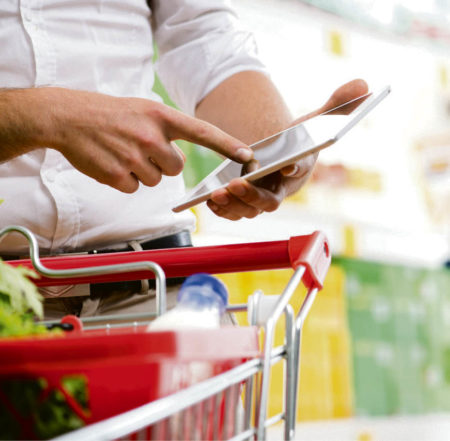In the new world of the digital economy where consumer packaged goods (CPGs) are increasingly sold online and it is ever harder to get the customers’ attention, brands need to do more to stand out.
The task of bringing a product to market in this new world is extremely complex. Brands have to consider not only the inherent aspects of the product, but there are also diverse packaging considerations, including legal regulations, and physical and marketing requirements.
To meet the needs of the demanding modern consumer, brands have discovered that more variations, promotions and localised versions are vital, even to the ultimate endpoint of a truly personalised product.
Coca-Cola’s successful Share a Coke campaign, which saw its script logo replaced by consumers’ names, marked the moment when the personalisation trend hit the big time. In its original launch in Australia, the campaign boosted sales of Coke among young adults by 7 per cent, bucking the decline in the soft drinks market.
Other CPG brands have also enjoyed great success with personalization, including Lindt and Nutella.
Moving from the mass markets of the past to the dream of one-to-one marketing can be challenging for everyone involved in the process.
Philippe Adam, vice president of global marketing at Esko, a global supplier of integrated solutions for the packaging, sign and display, and publishing industries, says: “This is a key challenge for all CPG brands. Everyone wants more versions, promotions and personalisation in order to sell more.
“The consequence of this desire is that it forces everyone in the supply chain to move from managing few SKUs [stock-keeping units] to hundreds and even thousands, up to the point where each personalised product has its own SKU.”
 The Share a Coke campaign eventually allowed consumers to choose from half a million different personalised bottles using an online portal.
The Share a Coke campaign eventually allowed consumers to choose from half a million different personalised bottles using an online portal.
This brings us to another key challenge for brands and designers: we live in a world where the boundaries between the physical and digital are increasingly blurred, creating an environment that think-tank The Future Laboratory dubs “phygital”.
Reflecting this new phygital paradigm, Amazon is now opening physical stores while Apple is making its new stores into experience hubs rather than simply places to buy the latest iPhone.
Ensuring consistency is the main challenge for CPG brands, agencies and printers working in a world where consumers want localised and personalised products, and the online and offline are blurring.
“The issue for those in the CPG industry is that the packaging has now become the product,” says Mr Adam. “How can companies get consistency around the assets they produce to print the packaging for the shelf versus the same asset they are using digitally with online retailers, as well as in advertising, social media and other campaigns?”
Changes in legislation are also having an impact. Information on nutrition and allergies needs to be consistent across the product universe, physical as well as digital and even in a personalised world.
“The more channels you have to manage and feed, the more you multiply the risk of errors and inconsistency – this is where Esko can help,” says Mr Adam.
In an increasingly global and heavily outsourced world, embracing all a brand’s assets and managing them in a consistent way is crucial.
“Esko provides an end-to-end solution for producing packaging assets, from the initial design, using hyper-realistic 3D imaging on virtual shelves, via printing and producing, to smart solutions that optimise how the package fits into its box for transport to the retailer and end-consumer,” says Mr Adam. “In addition, Esko solutions enable those assets to be shared for use in all communication and online channels.”
The pre-media and printing companies in the supply chain play an important role and also use Esko’s solutions to be more efficient in a highly competitive world.
“We make sure any creative idea can be printed,” he says. “We manage colour and also provide software to optimise the whole process, enabling printers and packagers to avoid mistakes, cut costs and handle more jobs.”
This is why Esko’s integrated asset management and workflow solutions for the print and packaging industries are used in nine out of ten products on shop shelves worldwide.
In today’s digital economy, the challenge is to bring products from ideation to the world of both shelf and screen as fast as possible, but with consistency across the entire journey. Esko is there every step of the way.
Want to learn more? Talk to us at [email protected] or visit www.esko.com/futureofpackaging

